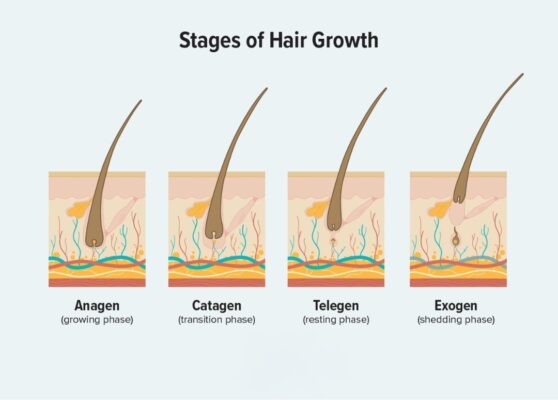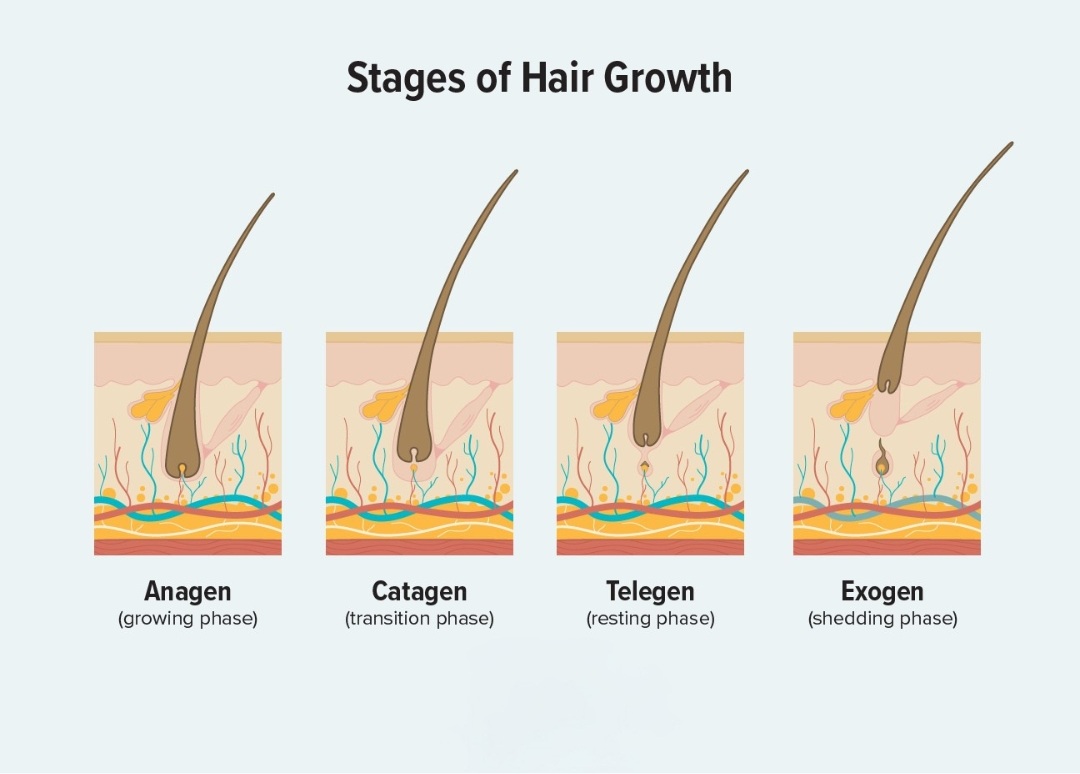
Dr. Jim Johnson
With 15+ years of experience, Dr. Jim Johnson is a leading dermatologist specializing in hair and scalp health. His research on Redensyl, Baicapil, and Capixyl helped shape ALIKA, a Vietnamese brand that harnesses nature’s power for healthier, stronger hair.
- Dr. Jim Johnson
- March 30th, 2025
“Am I Losing Too Much Hair?!”
That little wave of panic when you see strands clinging to your brush or circling the shower drain?
We’ve all been there. It’s easy to jump to conclusions and worry that something is seriously wrong. But here’s a crucial piece of information that often gets overlooked: shedding hair every single day is not only completely normal, it’s actually a vital part of how your hair renews itself.
🧑⚕️ From a Dermatologist’s Desk
As a dermatologist specializing in hair health, one of the most common concerns I address is shedding. Helping patients understand the natural life cycle of their hair often brings immense relief. So, let’s pull back the curtain on the fascinating “secret life” of a hair strand and learn the difference between normal daily shedding and true hair loss.
🌀 Decoding Your Hair’s Natural Rhythm: The Growth Cycle
Your hair doesn’t just grow continuously; each individual strand follows its own unique, three-phase cycle. Importantly, not all hairs are in the same phase at the same time (thank goodness, or we’d all go bald periodically!). This asynchronous cycle ensures you maintain a relatively consistent head of hair.
Here are the phases:

1. Anagen Phase (The Growth Factory)
-
What happens: This is the active growing phase. Cells in the hair follicle root divide rapidly, creating new hair growth. The hair pushes up and out of the follicle.
-
Duration: This phase is the longest, typically lasting anywhere from 2 to 7 years (or even longer for some individuals). Genetics largely determine the length of your anagen phase, which dictates the maximum length your hair can reach.
-
How much hair: At any given time, about 85-90% of the hairs on your head are actively growing in the anagen phase.
2. Catagen Phase (The Transition Signal)
-
What happens: This is a short, transitional phase signaling the end of active growth. Hair growth stops, the outer root sheath shrinks and attaches to the root of the hair, forming what’s known as a “club hair.” Blood supply to the follicle is cut off.
-
Duration: Very brief — only about 2-3 weeks.
-
How much hair: Only about 1-2% of your hairs are in the catagen phase at any time.
3. Telogen Phase (The Resting Room)
-
What happens: The follicle takes a break, essentially resting for a period. The club hair is fully formed and sits dormant in the follicle while new hair growth begins beneath it.
-
Duration: Typically lasts for about 3 months.
-
How much hair: Around 10-15% of your scalp hairs are in the telogen phase at any one time.
💨 The Grand Finale (Exogen)
At the end of the telogen phase, the resting hair is shed (this shedding part is sometimes called the exogen phase) to make way for the new anagen hair growing underneath.
✅ The Takeaway
Seeing those 50-100 shed hairs each day? That’s usually just the telogen hairs completing their natural cycle! It’s your body making way for new growth.
🔍 Normal Shedding vs. When to Raise an Eyebrow
So, how do you differentiate between this normal shedding and something more concerning, like actual hair loss?
Normal Shedding:
-
Gradual loss of resting (telogen) hairs
-
Typically 50–100 hairs/day
-
No noticeable overall thinning
-
New hairs are growing underneath to replace them
Hair Loss (Potential Concern):
The hair growth cycle is disrupted, leading to:
-
Excessive shedding
-
Hair falling out prematurely
-
Hair not regrowing properly
🚩 Signs That Might Warrant Attention:
-
Sudden Increase in Shedding: You notice significantly more hair falling out than usual – perhaps seeing clumps in the shower or on your brush.
-
Noticeable Thinning: Your ponytail feels thinner, your part looks wider, or you can see more of your scalp than before.
-
Patchy Loss: You develop distinct bald patches (could indicate conditions like Alopecia Areata).
-
Receding Hairline: The hairline gradually moves back, particularly at the temples or forehead.
-
Persistent Shedding: Excessive shedding continues for more than 2-3 months.
-
Scalp Issues: Shedding is accompanied by significant itching, redness, pain, scaling, or inflammation.
⚠️ What Can Disrupt the Cycle?
Many factors can throw this delicate cycle off balance, pushing more hairs into the telogen phase prematurely (leading to a condition called Telogen Effluvium) or affecting growth in other ways.
Common culprits include:
-
Significant stress
-
Hormonal changes (pregnancy, menopause, thyroid issues)
-
Nutritional deficiencies
-
Certain medications
-
Illness (especially with fever)
-
Harsh treatments
💡 Peace of Mind Through Understanding
“Understanding this natural process alleviates unnecessary anxiety,” as I often explain.
Panicking about every shed hair isn’t helpful. By recognizing the normal rhythm of your hair’s growth and shedding cycle, you can stop worrying about the daily hair fall that’s perfectly healthy.
Instead, focus on:
-
Maintaining a healthy lifestyle
-
Practicing gentle hair care
-
Watching out for real signs of potential problems
And remember — if you do notice persistent or significant changes beyond normal shedding, consulting a dermatologist or trichologist is always the best next step.





